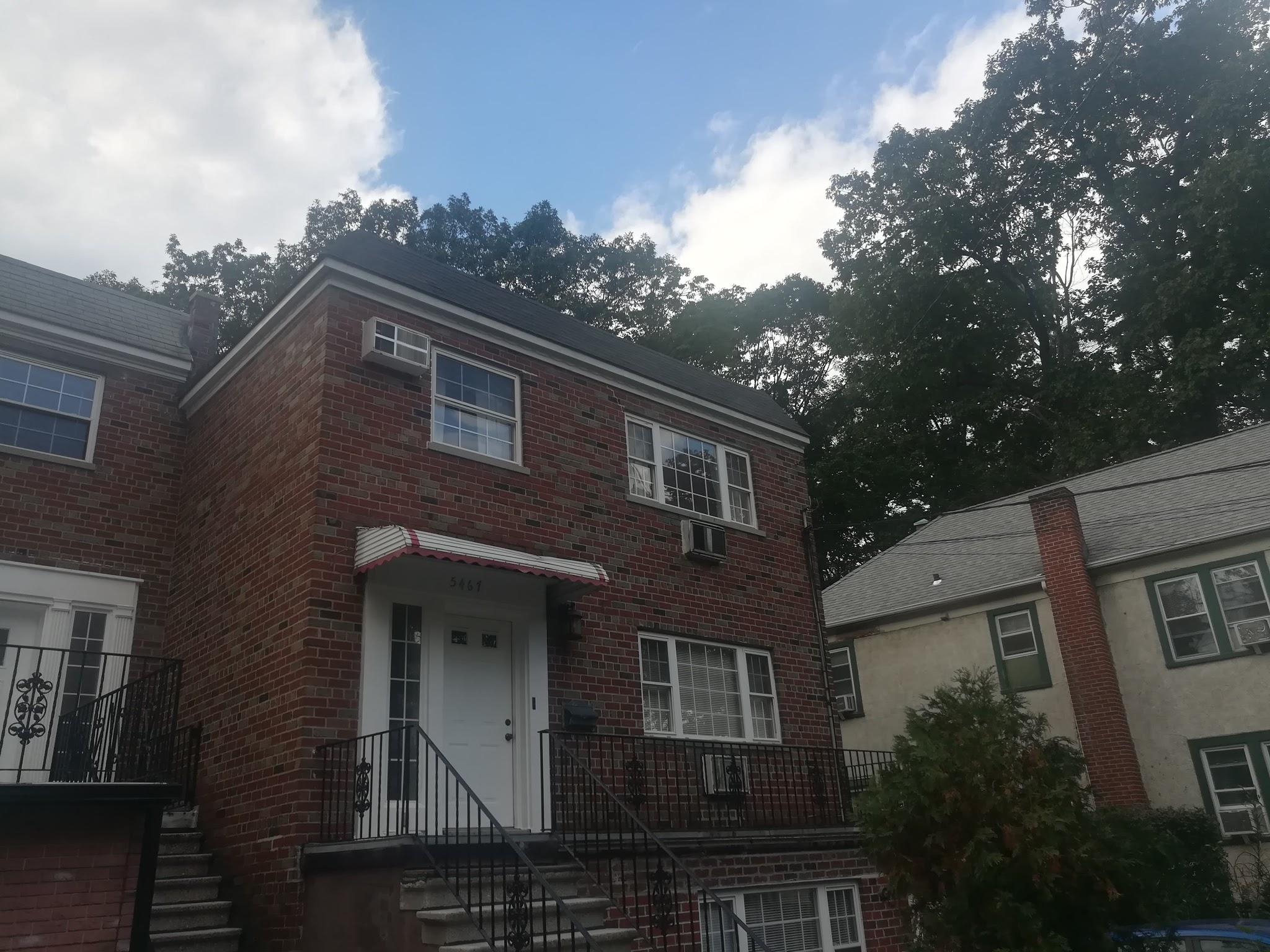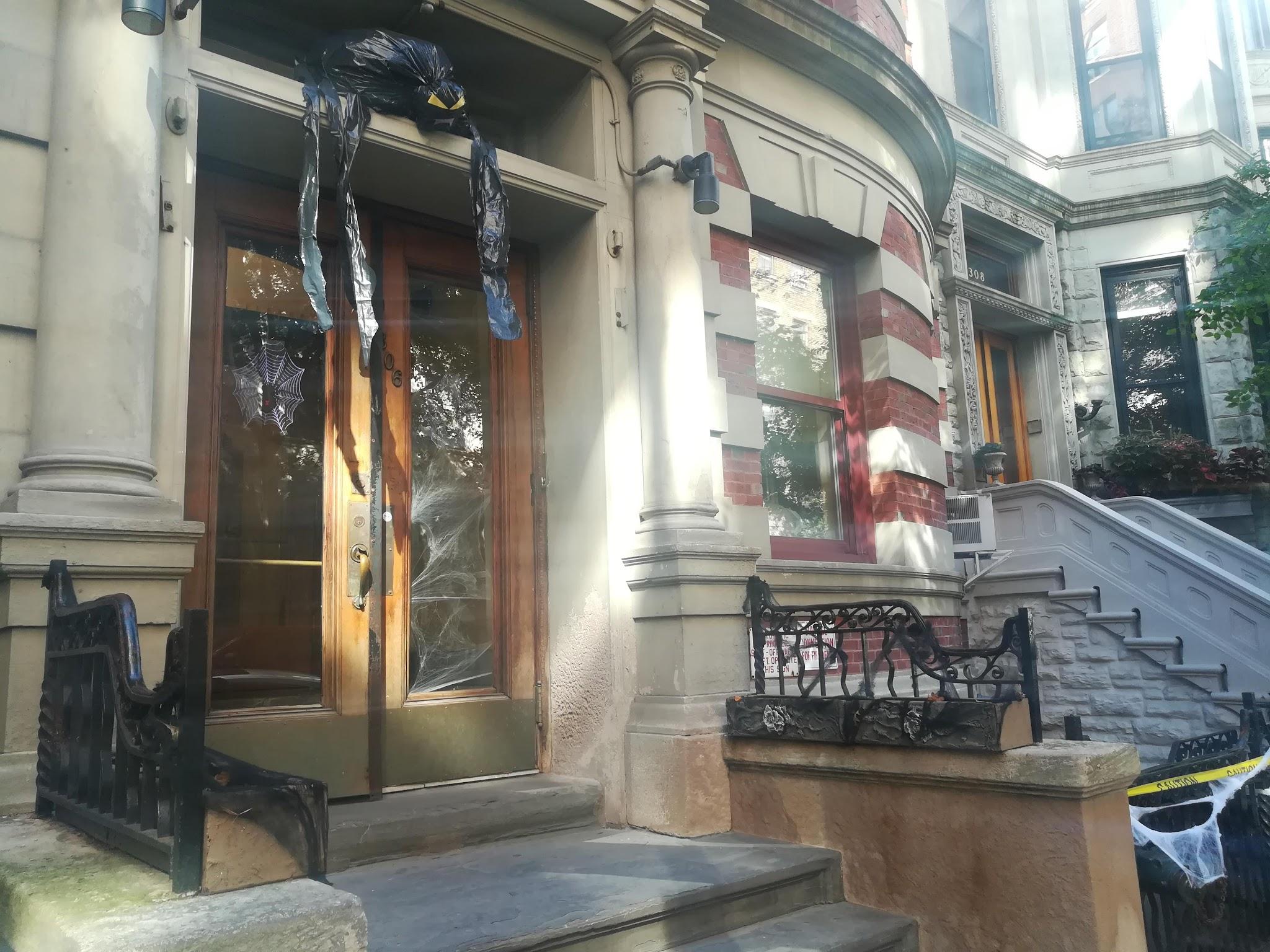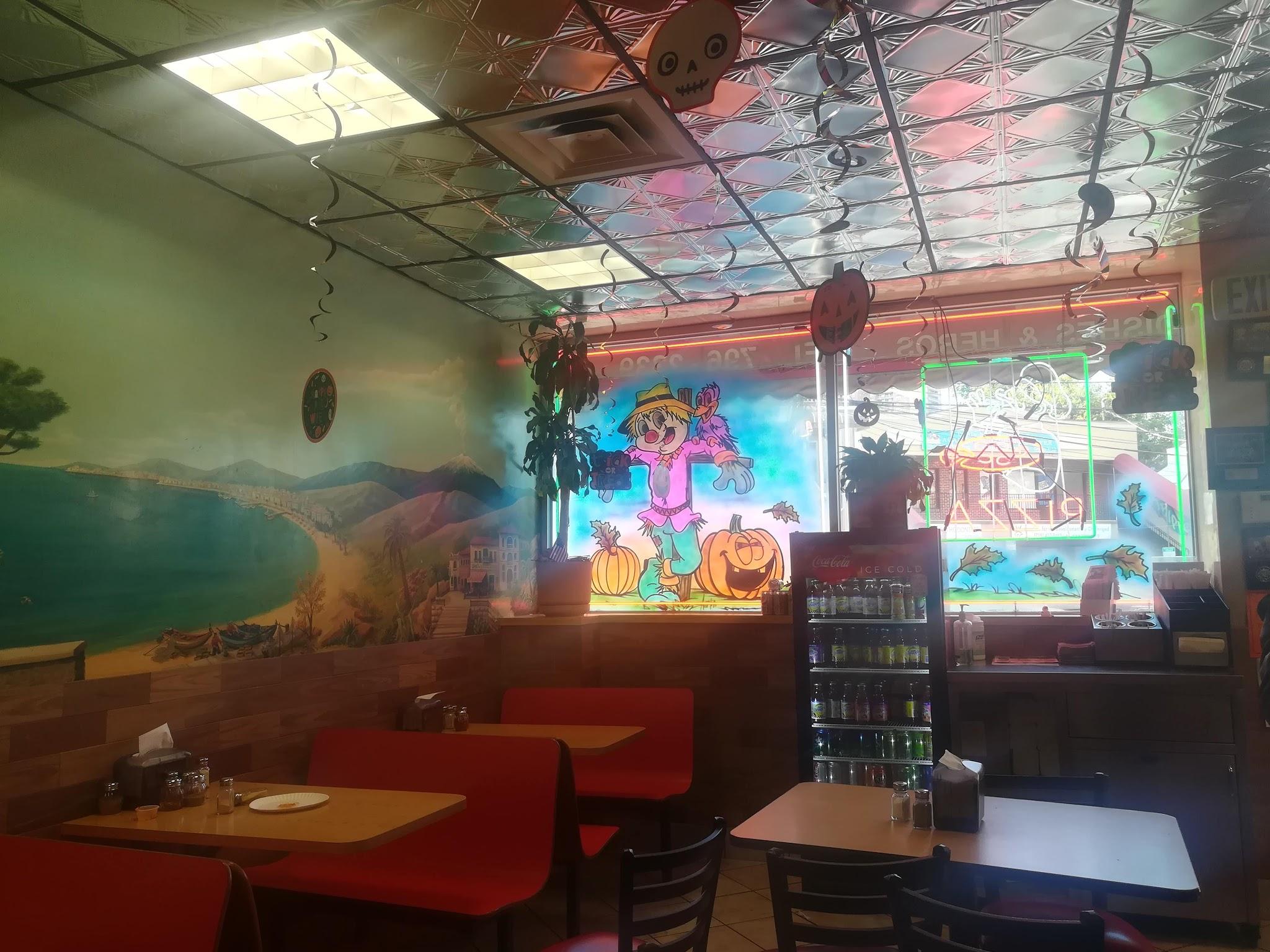A series of ambiguous omens cropped up before we even got near the scene of the crime.
On Broadway, seven-foot stalks of corn fell down into my path: just a grocery store display gone awry…or was it? I told my fellow reporter, Chrys, it felt like a sign of ill fortune. We started talking about portents and she told me that in the Philippines, red cars were a bad sign; you were supposed to throw rocks at them. And wouldn’t you know it, when we finally got to the street where the fatal incident had occurred, a sports car as red and flashy as the cape of a cartoon Satan drove past us, baritone engine roaring. Weirdest of all was an inscription we saw in the concrete on Mosholu Avenue: “Brian was here.”
This would be an utterly commonplace inscription, had we not been looking for Brian right at this place.
We were covering a “crime story” for our journalism class, which meant we had been given, as a starting point, a police report. Local crime coverage sometimes contents itself with rewriting these “crime sheets,” but the truth—and short of that, the most interesting bits–can only be found by looking beyond the police report.
The details, according to the report, were as follows: On the night of August 21, 2018, a 911 call alerted the police to an “emotionally disturbed person” inside a home in Riverdale. (Riverdale is a neighborhood in the northwest tip of the Bronx that is arguably not really part of the Bronx, but closer in geography and culture to white, wealthy Westchester.) Police and emergency medical services arrived to find 75-year-old John M. in a state of disorientation; he was transferred to the hospital, where he slowly spiraled and was pronounced dead on September 12.
It could have been nothing to follow up on, unfortunate but ordinary. But the medical examiner pronounced the death a homicide (internal hemorrhaging), and, about a month later, John’s son, Brian, was arrested on charges of manslaughter, aggravated criminally negligent homicide, and assault. The working theory is that Brian slammed John’s head into a wall, which eventually caused his death. Or, as I tried to sum it up, in the rather limp lede I eventually came up with for my class assignment: “Brian M., 46, was arrested Monday on charges of killing his father, John M., in the heat of an argument.”

It’s important to note that information from police sources is often unsound or mendacious, to the point where the Manhattan DA has sued the NYPD over it. And that’s when information is provided at all: the police press release didn’t mention the cause of death nor include even the detail of whether the victim and the presumed killer, who shared the same last name, were related (they were). HIPAA regulations prevent the medical examiner and hospital from telling us anything; when asked for a few basic clarifications, DCPI (the Office of the Deputy Commissioner, Public Information) simply emailed us the same report we had already read. Unaccustomed though I am to reporting on the police, it is generally understood among reporters that the police are routinely opaque, as policy.
To fill in the gaps, all we could really do was show up on the scene and try to find what there was to find. So a few days after the arrest, we found ourselves in front of the house from which the initial 911 call had been placed. No one answered. I didn’t even hear the bell ring. We canvassed the other houses on the street, but from residents’ apparent lack of familiarity with the victim—who seemed to have lived in the neighborhood for a long time—it struck me as an atomized suburban neighborhood with few common spaces for people to congregate, where members of the same community didn’t really know each other. Certainly they didn’t seem to: a dead body had been found a few weeks ago in one of the houses, but nobody on the street knew who it had been.

One resident, Lucrecia, had heard something about the mysterious death. “A woman said, I think one person passed away,” she told Chrys and me; “He was more than one day alone and nobody knew about it.” Lucrecia had spoken to John M. once, however, in the early months of 2018. He’d told her that he had been recovering from a stroke and was feeling much better than before.
“I am very sorry about him, he was kind with me,” she said. “Shocking and sad, very sad.”
Lucrecia didn’t know John that well, but was acquainted with his son—his other son, Sean—whom she had often seen in the past year, smoking in front of his house, while she was out walking her dog. He was staying with his father to recover from a hip surgery, apparently. He’d often speak to someone on the phone, “sometimes loudly or upset, but he was a nice person,” she said. “Never mentioned his dad.” And then, one day, he was gone. He’d gotten married and moved out of state. We could deduce that Brian probably moved in soon after.
We’d gone in search of John, but few people knew him. The only trace of him that we could find was at the dry cleaners. He had dropped off a leather jacket a long while ago, the cashier said. He was supposed to pick it up on Christmas Day 2017, but he never showed. After six months, the jacket, like any other unclaimed garment, was donated; there is presumably someone walking around New York right now, wearing the dead man’s jacket without knowing it.
It was Brian who we ended up tracking, chasing his specter through the neighborhood. Along nearby Mosholu Avenue—a quiet street peppered with Irish bars where in the middle of the day you might see a man lean out of a car window to belt out “Danny Boy”—he’d had a few regular haunts. At Frankie’s Tavern, no one knew him, but his story rang a bell with the bartender, who opened the latest copy of the Daily News to reveal that we had been scooped. At least now we had an explanation of the events (the police’s version, but at least a version) and a picture of him to show people. He was a frequent customer at Downey’s Bar and Grill, according to bartender Chuck, who described him as “mopey” and speaking in a “monotone.”

Brian talked a lot about his father, who he was living with and taking care of, according to Chuck. He had also been inappropriate to a waitress there. “He was a strange guy. He was odd,” Chuck said. “It was hard to pinpoint but he was just odd.”
I’d also happened to ask my friend Lea, who is a long-time Riverdale resident, whether she knew the family. She didn’t but offered, unprompted: “Riverdale has a good number of those weird white dudes who are kind of older,” she texted. “They’re very strange.”
A few blocks away from Downey’s at Mosholu Deli, Brian regularly bought Coors Light and baby-blue packs of American Spirit cigarettes and talked about his father to the cashier, Anabelis. “He said he used to take care of his dad and no one else wanted to do it,” including his siblings, Anabelis told us.
Brian’s brother was present at his arraignment. He waved to his brother and gave him a thumbs up in the courtroom. We couldn’t reach him for comment; his phone went straight to voicemail. The gruesomeness of the events recently suffered by the M. family didn’t seem quite real, because we weren’t able to actually speak to anyone who was affected by it, not even anyone who’d witnessed anything personally. It felt less like delving into a killing than like filming B-roll for a creepy film or a vérité documentary, especially with the presence of cheerful, macabre Halloween decorations all over the place.
Chrys asked me what Halloween meant in America. This kitchen-sink mixture of occult lore from every country, never engaging with the significance of any of it—what did it all add up to? I quipped that Americans are so terrified, all the time—the ones who don’t actually have anything to fear, I mean—that a serious celebration of Halloween or its sister holidays of All Saints Day or All Souls Day, complete with visiting graves like in France or Mexico or the Philippines, might just be too much. So many of my compatriots mainline crime stories, ingesting violence and death straight into their veins—but only in the form of neat, stylized narratives. It’s as though, if enough police blotters and gory documentaries get churned out, they can make all comfortable, safe middle-class Americans so afraid as to forget we don’t actually have much to fear—that if or when violence strikes, it usually comes not from an intruding Other but from inside the houses we have strived to turn into fortresses.
As the day wound down it got colder, even in the sunlight, and we inched towards a possible explanation of John M.’s death. It seemed reasonable to assume that Brian had been frustrated by having to care for his diminished father, that he had manhandled him during an argument without realizing that he was inflicting a fatal injury. But did I just think that was reasonable because the police said so?
We couldn’t get to the heart of the matter; we could only poke around at the gray edges of a dark shadow. Even this statement is somewhat beyond the pale of Crime Writing, because it implies there’s an opacity in the criminal justice system that we are just resigning ourselves to. The industry standard is to get a few quotes from the police source you’ve carefully cultivated by “working the beat” and wrap the story up neatly in a clownish headline, just like this: “Domestic donnybrook ends with dad’s death.”
Simple enough.
Emily Suzanne Lever






